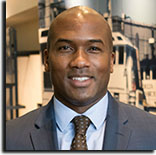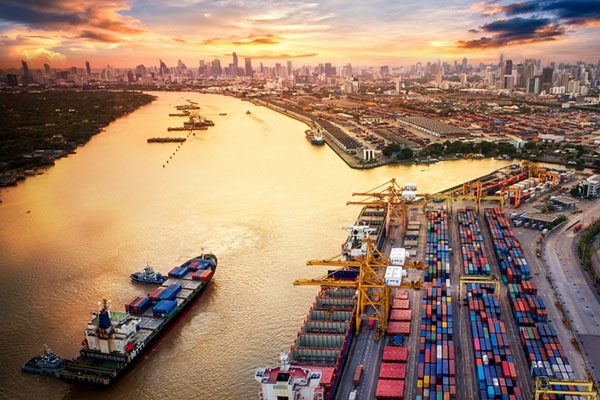Port of San Francisco’s new maritime director shares insight and vision on cargo challenges for 2020
Pier 80 transitioned into an automobile import/export facility in 2016. And from year one to year three, the port has experienced significant growth in the operation servicing over 140,000 units.
 Editor’s Note: Port of San Francisco Executive Director Elaine Forbes announced the appointment of Andre Coleman as the new Maritime Director for the port last February. In his current position, he is responsible for the strategic oversight and implementation of the port’s maritime portfolio including assets, services, operations, and labor and client relations for the 71⁄2 miles of San Francisco waterfront. In in this exclusive interview, he shares his vision for cargo operations and the logistical advantages the port hope to enhance.
Editor’s Note: Port of San Francisco Executive Director Elaine Forbes announced the appointment of Andre Coleman as the new Maritime Director for the port last February. In his current position, he is responsible for the strategic oversight and implementation of the port’s maritime portfolio including assets, services, operations, and labor and client relations for the 71⁄2 miles of San Francisco waterfront. In in this exclusive interview, he shares his vision for cargo operations and the logistical advantages the port hope to enhance.
Logistics Management: What do you regard as the primary challenges of your new job?
Andre Coleman: Revitalization of the shipyard. With the increase in the size of cruise and cargo ships coupled with the competitive demands of the ship repair industry, attracting a viable long-term shipyard operator has been challenging . However, the port has entered several short-term leases for portions of the site while we continue to explore options to secure a new term operator.
LM: Kindly explain how the (Foreign Trade Zone) FTZ enables Bay Area shippers?
Coleman: FTZ status enables Bay Area shippers to avoid paying tariff or duties on products that are imported and then exported without ever participating in the domestic market. Shippers can also benefit from duty deferral or reduced duty based on multiple products being manufactured into one final product which has a less overall duty then each of the parts used. All these benefits encourage shippers and manufacturers to continue cargo movement and domestic operations which maintains local jobs.
LM: How closely does San Francisco collaborate with other ports in the Bay?
Coleman: The Port of San Francisco regularly collaborates with other ports in the Bay. The Maritime Division collaborations include the Harbor Safety Committee, Marine Exchange of the San Francisco Bay Region and various port security working groups. Additionally, the Port of San Francisco actively contributes in advocating for the best interests of the maritime community through the California Association of Port Authorities (CAPA), which represents California’s eleven commercial ports.
LM: How is port addressing rising sea levels and other consequences of climate change?
Coleman: The Port of San Francisco manages 7.5 miles of bayside shoreline that is home to some of the region’s most popular open spaces and attractions, a national historic district, hundreds of small businesses, nearby housing, and maritime and industrial uses. The Port’s jurisdiction includes transportation networks like BART and Muni, critical utilities including drinking and wastewater, and key emergency response facilities. The Port’s Waterfront Resilience Program efforts ensure the waterfront, and its important regional and citywide assets, are resilient in the face of hazards such as earthquakes, flooding, sea level rise due to climate change, shoreline erosion, and others.
LM: Can you expend further on the Waterfront Resilience Program Framework?
Coleman. The Port developed a Waterfront Resilience Framework to address immediate hazards including seismic and flooding, as well as longer term hazards like sea level rise. This adaptive planning framework allows the port to act now to address risks to life safety and emergency response, while planning for mid- and long-term risks. It also allows the Port to be responsive to community priorities, changes in science, and funding and partnership opportunities.
LM: Will the port become an export gateway for automobiles?
Coleman: Pier 80 transitioned into an automobile import/export facility in 2016. And from year one to year three, the port has experienced significant growth in the operation servicing over 140,000 units. This past fiscal year, the port handled slightly under 80,000 units and we expect to exceed that number in the new fiscal year. The largest and most consistent business has been with local electric vehicle manufacturer who has exported over 120,000 units from Pier 80 with discharge ports in both Asia and Europe.













